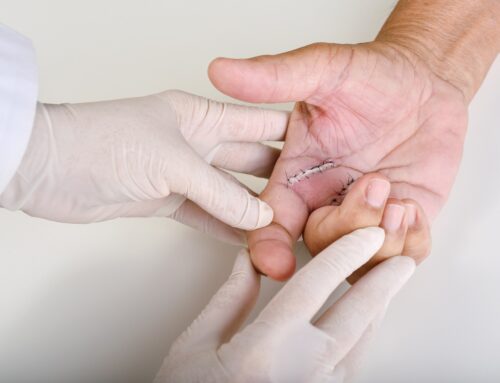Imagine this: you’re enjoying your day, perhaps playing a sport or just walking down the street, when suddenly you slip or fall, and instinctively, you put your hand out to break the fall. Ouch! You feel an immediate pain in your wrist, and it’s starting to swell. It’s possible that you’ve sprained your wrist. But what exactly is a wrist sprain, and what should you do next?
What is a Wrist Sprain?
A wrist sprain occurs when the ligaments in your wrist – those tough bands of tissue connecting bones – stretch too far or even tear. This often happens due to a sudden impact or twist. Think of your wrist as a complex network of delicate ropes working in harmony. When one of those ropes gets overstressed, it can result in pain, swelling, and limited movement.
Initial Steps: RICE Method
The first and most important step after suspecting a wrist sprain is to follow the RICE method:
- Rest: Give your wrist a break. Avoid using it for any activities that might aggravate the injury. It’s like putting your wrist on a mini-vacation to allow it to heal.
- Ice: Apply ice packs to the injured area for 15-20 minutes every couple of hours during the first 48 hours. This helps reduce swelling and numb the pain. Think of it as giving your wrist a refreshing cool drink after a tough workout.
- Compression: Use an elastic bandage or a compression wrap to help control swelling. Be careful not to wrap it too tightly – you don’t want to cut off circulation. Imagine it as giving your wrist a gentle, supportive hug.
- Elevation: Keep your wrist elevated above heart level whenever possible. This reduces swelling by allowing fluids to drain away from the injured area. Prop your wrist up on a pillow like it’s lounging on a comfy sofa.
When to See a Doctor
While the RICE method is effective for minor sprains, some situations require professional medical attention. If you experience severe pain, significant swelling, bruising, or an inability to move your wrist or fingers, it’s time to see a doctor. An orthopedic specialist can assess the severity of your sprain and recommend further treatment, which may include:
- Imaging Tests: X-rays or MRIs to check for fractures or more severe ligament damage.
- Splints or Casts: To immobilize the wrist and allow the ligaments to heal properly.
- Physical Therapy: Exercises and stretches to regain strength and flexibility.
Recovery and Rehabilitation
Recovery from a wrist sprain can take anywhere from a few weeks to several months, depending on the severity of the injury. During this time, it’s crucial to follow your doctor’s advice and not rush the healing process. Rehabilitation exercises will gradually reintroduce movement and strength to your wrist.
Think of this phase as a slow, steady climb up a mountain – each step is deliberate and necessary to reach the summit. Simple exercises like wrist flexion and extension, and using a stress ball, can help restore functionality.
Preventing Future Sprains
Once you’re on the road to recovery, it’s essential to take steps to prevent future sprains. Here are some tips:
- Strengthening Exercises: Regularly perform wrist-strengthening exercises to keep your ligaments strong and flexible.
- Proper Technique: Use proper techniques when engaging in activities or sports that put stress on your wrists.
- Protective Gear: Wear wrist guards or braces during high-risk activities.
Imagine your wrists as valuable assets – protecting them ensures they continue to function smoothly, much like maintaining a well-oiled machine.
Final Thoughts
A wrist sprain, while painful and inconvenient, is manageable with the right approach. By following the RICE method, seeking professional help when needed, and committing to a thorough recovery and prevention plan, you can overcome a wrist sprain and get back to your daily activities.
Remember, your wrists play a crucial role in your everyday life – from typing on your computer to lifting objects. Treat them with care and respect, and they’ll serve you well in return.
References
- Mayo Clinic Staff. (n.d.). Wrist Sprain. Mayo Clinic. – https://www.mayoclinic.org/diseases-conditions/wrist-pain/symptoms-causes/syc-20354826
- American Academy of Orthopaedic Surgeons. (n.d.). Sprained Wrist. OrthoInfo. https://orthoinfo.aaos.org/en/diseases–conditions/wrist-sprains/
- Healthline Editorial Team. (2022). How to Treat and Heal a Sprained Wrist. Healthline. https://www.healthline.com/health/sprained-wrist#treatment







Leave A Comment